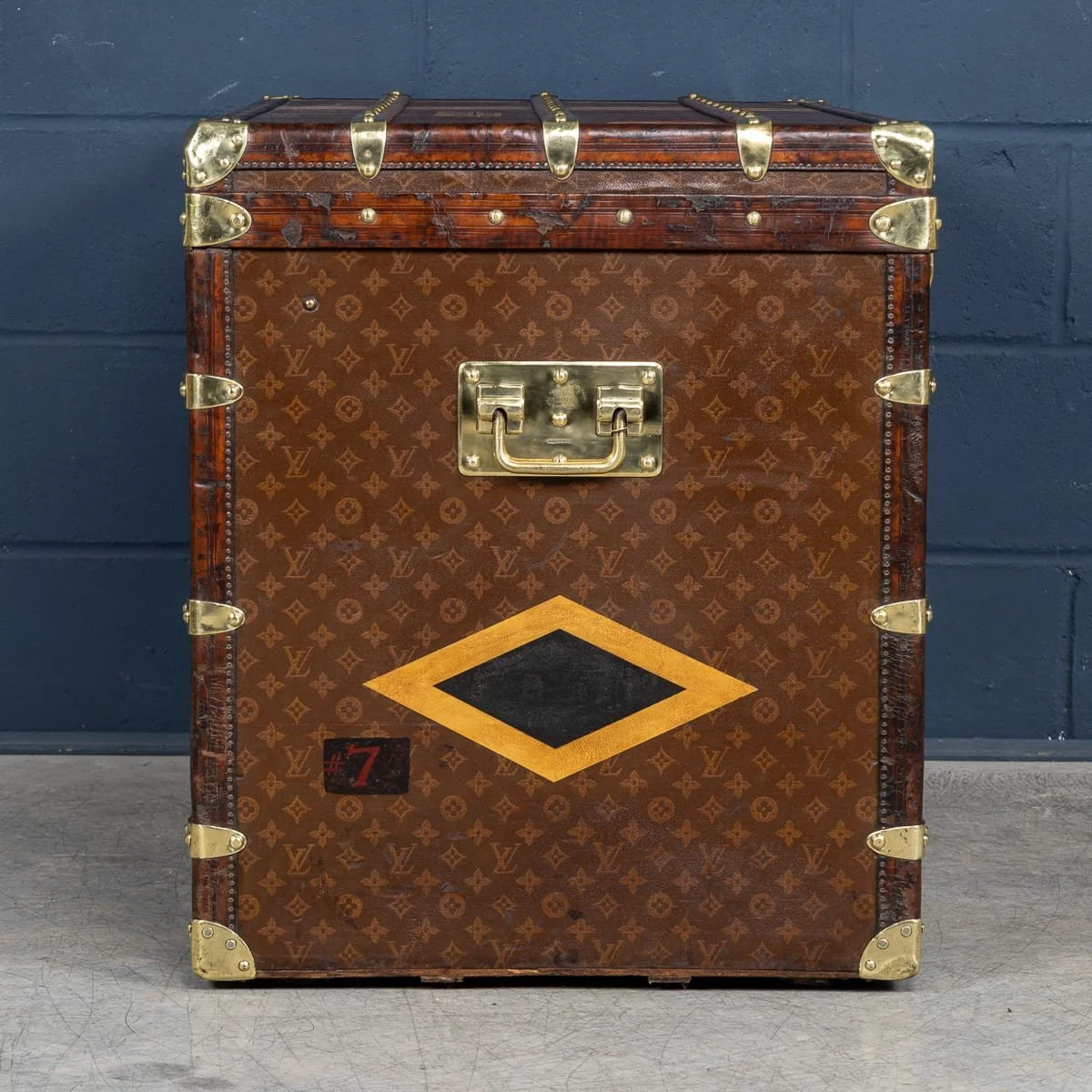A large Louis Vuitton trunk in monogrammed canvas, France, circa 1920
















































A large Louis Vuitton trunk in monogrammed canvas, France, circa 1920
An exquisite Louis Vuitton trunk dating from the early 20th century. This example represents the tallest of the standard sizes, standing at 70 centimetres in height, with any taller trunks having been made to special order. The trunk is clad in the world-famous LV monogram canvas, complemented by its original leather trim and brass fittings, making it a top-of-the-line model even at the time of its purchase over a century ago. Brimming with style and sophistication, this trunk is both a striking conversation piece and a versatile item of furniture. Its generous proportions make it ideal as a unique decorative feature while also serving as a highly practical storage solution, perfectly suited to both modern and traditional interiors.
A brief history about Louis Vuitton trunks: Louis Vuitton was born in 1821 to a farmer and milliner and came from a long-established working-class family in eastern France. Vuitton grew up understanding the effects of perseverance and a strong work ethic from watching his family. At the age of 16, he made the decision to walk 292 miles from his hometown to Paris to try and make a new life for himself. When he arrived the city was in the midst of industrialization with current modes of transportation evolving quickly allowing for longer journeys. With this came the need for sturdy travel pieces.
Vuitton was taken as an apprentice for a successful box maker and packer named Monsieur Marechal. He learned to craft durable containers and how to pack them properly – a well-respected profession at the time. In 1854, years after he had mastered his craft and became well respected for it, Vuitton ventured out on his own to open a shop on Rue Neuve des Capucines. It was here that he began to establish himself as a luggage maker. Then, in 1858, Vuitton designed the first Louis Vuitton steamer trunk. At the time trunks had rounded tops to allow for water to run off but this did not allow for convenient stowage. Vuitton introduced a flat, yet waterproof, trunk that was easily stackable. The first of his trunks were outfitted with a grey canvas referred to as Trianon – it wouldn’t be until several decades later that the signature monogram would be introduced.
With a burgeoning business, Vuitton moved his family and workplace to Asniere, where he employed twenty workers to craft his trunks. By 1900 he would have 100 employees, and in 1914 the company would more than double in size. After years of success, Vuitton began to experiment with the design of his luggage by introducing a new striped canvas pattern (1876) and later the still well-known Damier print (1888). The hand-painted patterns were developed to prevent counterfeits. Even in the late 1800s, Louis Vuitton was enough of a status symbol to warrant counterfeiting. In 1886, his son George invented and patented an ingenious locking system that made it impossible to pick the lock of their trunks. This lock is still used today.
1892 would prove to be a time of mourning for the family as Louis Vuitton passed away at the age of 70. His son, Georges Vuitton, became the new head of the luxury house. Louis Vuitton’s passing would prompt his son to once again change the print of their luggage, and in 1896, to honour his father, the signature LV monogram was introduced and patterned with LVs, quatrefoils, and flowers. Under his direction success followed and the iconic monogram rose to fame among elite clientele.
Condition: good overall vintage condition, minor scrapes in keeping with age to the exterior, minor staining to the interior. Key lacking. Please refer to photographs.
Dimensions: 70cm high, 100cm wide, 60cm deep
For additional information please contact us:
Email: info@alessiolorenzi.com
Phone: +44 7701 088 288
REFERENCE: H2508wd
